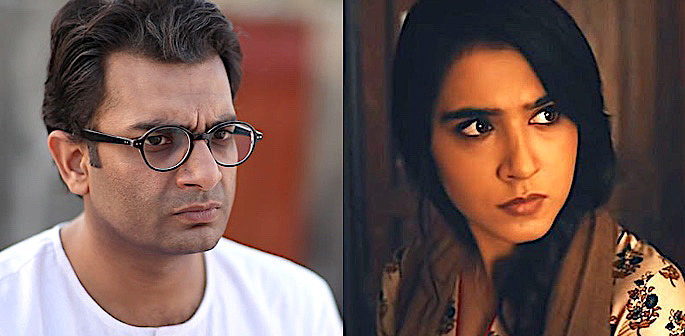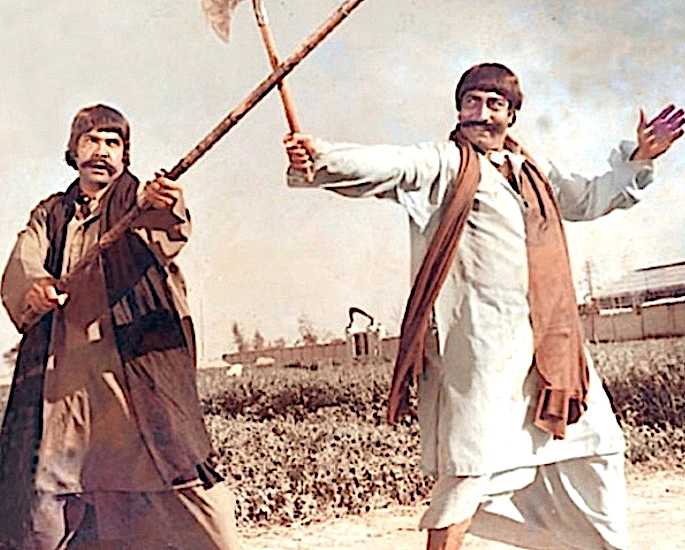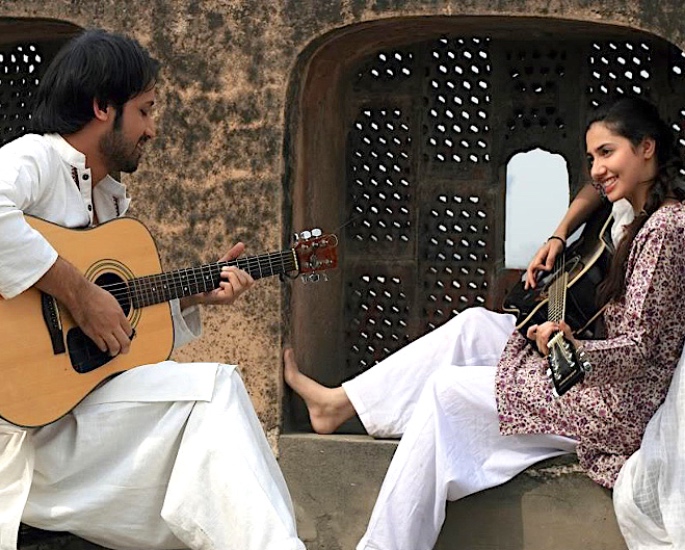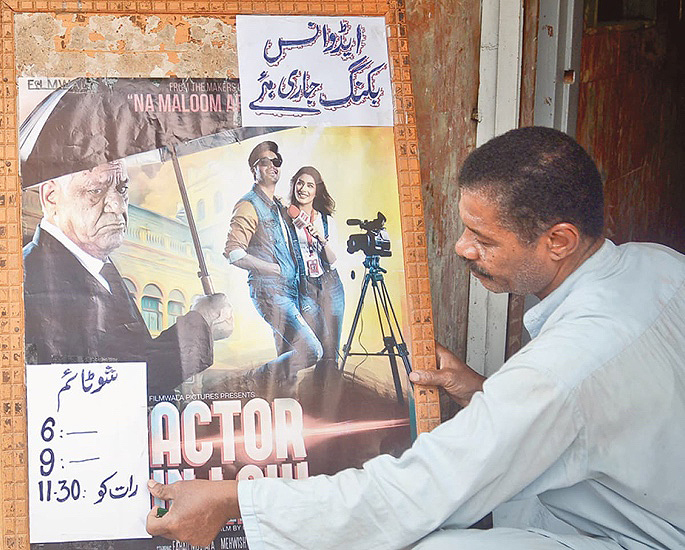"cinemagoers were disgusted with the poor quality of films at home.”
Cinema can showcase a nation’s sense of individuality. However, with Pakistani films, there is a strong case to establish an identity of its own.
Pakistan cinema has filmmakers who can paint this particular need for identity. Movies are a form of art, which can be visualised and impactful simultaneously.
After all, whatever is shown on the screen can influence us all. Ever since the late seventies, Pakistani films saw a massive decline due to censorship and lack of quality.
There have also been attempts to follow elements of Bollywood, which has not always worked.
Whilst there is light at the end of the tunnel, a true revival is not there yet.
DESIblitz explores the identity crisis that has marred Pakistani films over the years.
From Golden Age to Rapid Fall
Post partition, Pakistan films went from top quality to mediocre in a very small amount of time. The early 50s to the late 70s was the ‘Golden Age’ of Pakistani cinema.
Despite the presence of strict censorship, screenwriters were creative, producing thought-provoking films.
These included the likes of Dupatta (1952). Yakkay Wali (1957), Heer Ranjha (1970), Naukar Wohti Da (1974) and Maula Jutt (1979).
Most of the films were very simple, with some defying societal norms with non-conventional content.
Sadly the downfall of the Golden Age began in 1977. This is when military rule had a big influence on the socio-political environment of Pakistan.
The decline had a big impact on Pakistani films, along with state television and radio.
From the 1980s and onwards Pakistan cinema saw a further deterioration with several bans on movies. The strict imposing of censorship meant producers were creating very few movies.
But soon after the end of the military regime in the late 80s, movies made were of low calibre and appeal. It was unfortunate that producers were unable to carry the golden age of Pakistani cinema forward in a positive way.
Hence, the art of filmmaking, entertainment value and other above attributes were not evident.
The only reason why cinema tickets were selling was because of regional audiences and sizzling songs. This included female artists dancing around in revealing clothes.
The movies at the time were also promoting extreme rage and violence through the ‘Gundasa’ (weaponry blade stick) culture. The stories of these movies were misogynistic and dreadful.
Women became the centre of attention. Whether it was a matter of honour, property, or anything, films revolved around the axis of women being the main cause of everything.
Almost all films ended up fighting for women, indicating the lack of creativity of Pakistani film writers. This had an effect on the state of society and people going to cinema houses.
Many of these movies showed a macho hero trying relentlessly to save his love lady from the cruel realities of society in Pakistan.
Enter the 21st century, Pakistani films were also of bad quality. There was no reasonable and captivating content. Annually, only hundred movies were coming from 11 movie studios of Pakistan.
The industry was not advance from a technological perspective. With no high definition cameras, it was easy to spot glitches, giving a poor visual and cinematic experience.
There was no room for any Pakistani movie to stand out internationally. The Pakistani film industry seemed stagnant at this point. It was very gloomy as the industry was producing C-rated movies with no hope of improvement.
Famous filmmaker Syed Noor told Associate Press of Pakistan (APP) that being behind technologically and the poor condition of theatres house did drive people away. He said:
“Since the films were not being made and the number of films had fallen from 200 films per year to a mere 20 or so, the cinema houses were turned into commercial plazas by the owners.”
“The abundance of foreign films made the viewer more critical and the fact also contributed to the decline of film industry as the cinemagoers were disgusted with the poor quality of films at home.”
During the same time, Indian cinema was producing high-grossing movies, with A-list stars.
A Ray of Hope
The ‘Made in Pakistan’ movie culture revived with Khuda Kay Liye (2007) by ace filmmaker Shoaib Mansoor. People began flocking to Pakistani cinema houses after a long period. However, the trend did not last for long.
Following the release of Khuda Kay Liye, the industry did resist change. It was still sticking to the ‘Gandasa’ culture, along with rural misogynistic ideals.
Writers were penning down the same love stories, romanticising domestic violence and defying real-life issues.
The irony of such action films was that the hero and villain kept resisting physics as much as they wanted to.
Despite facing a number of bullets, they survived to fire back the last one. Similar to Bollywood, dodging bullets was like a piece of cake in Pakistani films.
Denying creativity through censorship is one thing. However, the big question was why make heroes defy the laws of physics?
Following the release of Mansoor’s second movie Bol (2011), Pakistani cinema did introduce new faces and content. As. a result, the public was briefly again considerate to watching Pakistani films in the cinema.
It was like the new age arrival of Pakistani cinema. Nevertheless, it was not necessarily the revival of Pakistani cinema, This is because the big screen did not display quality stories on a consistent basis.
To glorify love and making movies for commercial purposes was never going to be a great strategy to uplift the standards of Pakistani cinema.
It was difficult to establish a long term ‘Made in Pakistan’ cinema culture with a shortage of movies and production houses responsible for generating ordinary content.
Pakistani cinema continues to produce very few films. Despite storylines, with a huge following of Bollywood movies, Pakistani people tend to prioritise films from across the border.
In many cases, it is not about genre preference but the quality of the movies. To make matter worse, Pakistani films have a Bollywood touch of some sort.
Following similar styles, Pakistani movies like to have ‘Item Numbers’ or Item Songs.’ It is because the mainstream audience wants more objectification than the real and issues-orientated content.
Even a ban on Indian movies did not help Pakistani cinema to gain recognition at a national level. Banning content or movies can never be the solution long term anyway.
Rather than films studios, Pakistani films are reliant on financial support from media groups such as GEO, HUM and ARY to produce commercial content.
Very few movies with media investment are worthy of critical acclaim. Although ironically these films are more high grossing than non-commercial content.
Censorship of Pakistani movies has taken aback the whole idea of depicting culture through movies. The censor board of Pakistan is responsible for censoring the real face of society.
There has been some attempt to make Pakistani films that are slightly less conventional. Movies like Na Maloom Afraad (2014) and Actor In Law (2016) had a focus on real-life issues and struggles. These movies did not miss or need an item song.
Furthermore, films such as Dukhtar (2014), Cake (2018) Laal Kabootar (2019) are like a ray of hope for Pakistani cinema. These movies have truly non-conventional storylines with no disguise of “all-happy” life and unwelcomed moral values.
Praising Lal Kabootar, Humza Zubair from Images Dawn writes a positive review:
“Laal Kabootar has many strengths, and one of them is its neatly plotted script.”
“Screenwriter Ali Abbas Naqvi has proved himself skilled.”
Directors like Sarmad Khoosat, who made the movie Manto (2015) also seem to reflect a very bold and creatively assertive aspect of Pakistani filmmakers.
Manto described the life stories of people dejected and abused by society.
For the sake of Art and Cinema
There is a lack of understanding in Pakistan when it comes to film and media. The producers of television dramas and commercials confuse the storylines of dramas with movies.
They do not understand or value the importance of big-screen as it all comes down to finances. The writers also need to up their game.
If the writers continue to write sob-stories with no actual plot the industry will soon collapse. There is also a need for change when it comes to the choices of audiences.
To see unique Pakistani content the audience must encourage and support movies that are challenging like Cake. This is to combat the predictable traditional norms and usual content.
Revival can only have real meaning when Pakistani cinema produces more impactful movies.
If the censor board keeps on banning original content then there might be no hope for this industry. In 2019, the movie Durj was briefly banned by the censor board for showcasing cannibalism.
The film does not take inspiration from the fictional character, Dr Hannibal Lector. More importantly, it revolves around the true story of a Pakistani family.
Deliberately hiding away the facts and manipulating reality can bring capital to the media groups and producers. But it will never be recognised as a work of art.
For something to be an artistic masterpiece, it needs to have the quality and a strong story-line that can live through decades. After all, an evergreen film will appeal to many future generations.
Pakistani cinema lacks the identity of its own with it being too complexed. Stories that do not resonate with the general audience. There are also stories that are fabricated with silver linings.
A bunch of production houses producers are only concerned with the avenue and commercial value of the movies.
Pakistani films can have their own identity as long as they do not follow the suit of Bollywood. Perhaps only then the true revival of Pakistani cinema can happen.



































































